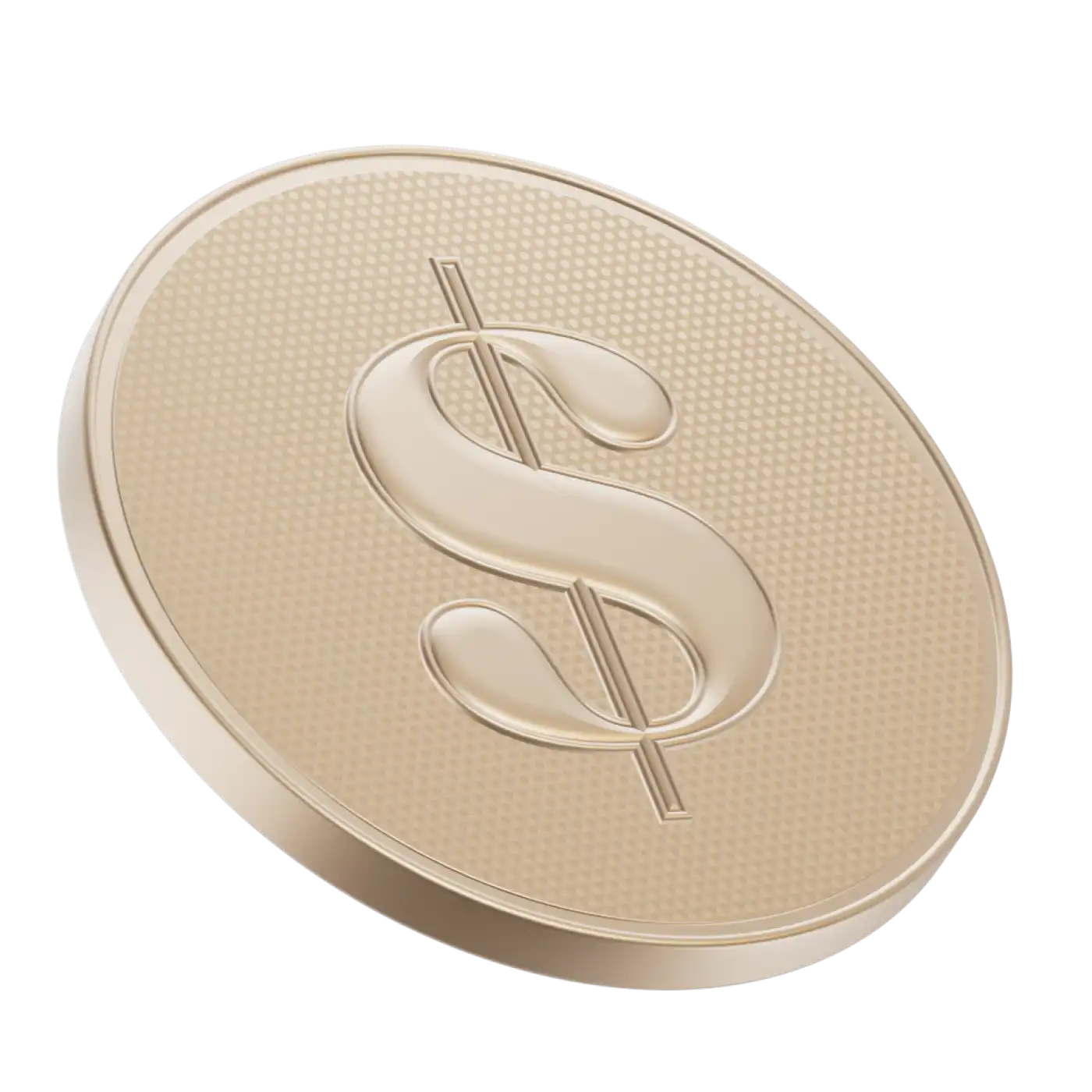Access all of the essential technical analysis terms you may need to know when getting started with technical analysis and picking stocks. Let’s get you investing on your own with confidence!
What’s the big deal with technical analysis?
Technical analysis looks at historical price and volume data on charts to identify patterns and predict future price movements. It assumes that all available information about a company is already reflected in the price, and that history tends to repeat itself. Knowing these terms can help you ask questions and make more informed decisions when it comes to picking stocks and working toward your financial goals.
Let's dive into some of the most common technical analysis terms you'll encounter:
Chart types: different ways to see the story
Bar chart: more detailed than a line chart, each bar shows the open, high, low, and close prices for a specific period. It shows a vertical line marking the high and low for that time period, with little horizontal arms sticking out for the open (left) and close (right).
Candlestick chart: like a bar chart, but each "candlestick" also shows the same data in an even more visual way. The "body" of the candle represents the open and close, and the "wicks" (or shadows) show the high and low. Plus, they’re colour coded: green or white for when the price closed higher than it opened, and red or black for when it closed lower.
Line chart: connects closing prices over a period of time, giving you a quick look at the overall trend. This simple view is great for getting the gist.
Point and figure chart: a unique chart type that uses Xs and Os to represent price movements. It ignores time and only records significant price changes, making it an excellent tool for spotting shifts in supply and demand.
Renko chart: filters out minor price movements by drawing a new "brick" when the price moves a certain amount, and is useful for spotting significant trends without the distraction of small fluctuations.
Trends and levels: marking direction and boundaries
Breakdown: when the price moves decisively below a support level. Also called the downside.
Breakout: similar to a breakdown, this term is used when a stock price moves decisively above a resistance level. This often signals the start of a new trend. Also called the upside.
Downtrend: when prices are generally moving down, forming lower highs and lower lows.
Pullback: a temporary dip in price during an uptrend or a temporary rise during a downtrend. It's like the market taking a small step back before continuing its journey.
Ranging market (sideways trend): when prices are moving horizontally within a defined band, without a clear upward or downward direction. It looks like the market is taking a breather, bouncing between two invisible walls.
Resistance: a price level that acts like a ceiling, where selling interest is strong enough to stop the price from rising further and it struggles to break above.
Reversal: when there’s a major change in a trend’s direction. The stock’s price basically does a U-turn, where an uptrend becomes a downtrend or vice versa.
Support: a price level that acts like a floor, where buying interest is strong enough to stop the price from falling further and it struggles to break through.
Trendline: a chart line that connects significant highs or lows, showing the general direction of the price.
Uptrend: when prices are generally moving up, forming higher highs and higher lows.
Chart patterns: recognizing market moods
These are specific shapes that appear on charts, often suggesting future price action:
Cup and handle: looks like a teacup with a handle. A "U" shape (the cup) followed by a slight downward drift (the handle). It's a bullish continuation pattern.
Double bottom: a double bottom is a chart pattern that looks like two troughs at the same price level, signalling a bullish reversal.
Double top: a double top is a chart pattern that looks like two peaks at roughly the same price level, signalling a bearish reversal.
Flags and pennants: short-term continuation patterns that look like a small rectangle (flag) or triangle (pennant) after a sharp price move. They suggest a brief pause before the original trend resumes.
Head and shoulders: a pattern resembling a head with two shoulders (a central peak with two smaller peaks on either side, all rising from a common baseline) that often signals a bearish reversal from an uptrend.
Triangles (ascending, descending, or symmetrical): when price actions converge two trendlines and indicate that the market is winding up for a big move.
Ascending: horizontal resistance and rising support (often bullish)
Descending: declining resistance and horizontal support (often bearish)
Symmetrical: converging trendlines (can break either way)
Candlestick patterns: solo or duo storytellers
Doji: a candlestick with a very small (or nonexistent) body. This means the open and close prices for that time period are very close and suggests that there’s indecision in the market.
Engulfing pattern: a two-candle pattern where a larger candle completely engulfs the previous smaller candle. A bullish engulfing (large green engulfing a small red) suggests a reversal up, while a bearish engulfing (large red engulfing a small green) suggests a reversal down.
Evening star: a three-candle reversal pattern that signals a bearish reversal by showing a bullish candle, a small indecision candle, and then another bearish candle.
Hammer: a bullish reversal pattern with a small body at the top and a long lower wick, making it look like a hammer. A hammer indicates that sellers have pushed the price down, but buyers have brought it back up.
Inverted hammer: a candlestick with a long upper wick and a small body at the bottom — like the hammer pattern but inverted. This candlestick indicates a bullish reversal.
Morning star: another three-candle reversal pattern that signals a bullish reversal by showing a bearish candle, a small indecision candle, and then another bullish candle.
Shooting star: a bearish reversal pattern with a small body at the bottom and a long upper wick, making it look like a falling star. This pattern indicates that buyers have pushed the price up, but sellers have brought it back down.
Spinning top: a candlestick with a small body, a long wick, and a long shadow, similar to a Doji but with a slightly larger body. A spinning top candlestick pattern can indicate indecision.
Indicators and other key concepts: tools for deeper insight
Average true range (ATR): an indicator that measures market volatility by showing how much a stock typically moves over a given period of time. A higher ATR means more volatile price swings.
Backtesting: a tool that is the investing equivalent of a practice run. This is accomplished by putting an investment idea through a stress test of past market conditions to see what would have happened. While backtesting can be extremely helpful, it is also important to remember that past performance doesn’t guarantee future results.
Bollinger bands: two standard lines placed above and below a moving price average. These lines expand and contract with market volatility, helping to identify overbought or oversold levels and potential reversals.
Crossover (moving average cross): when one moving average crosses above or below another.
Golden cross: when a short-term MA crosses above a long-term MA, it often indicates a bullish trend
Death cross: when a short-term MA crosses below a long-term MA, it often indicates a bearish trend
Divergence: when the price of a stock moves in one direction, but a technical indicator moves in the opposite direction. This can signal a weakening trend or an impending reversal.
Entry points: the specific price point when a trader plans to enter or buy a stock based on their research.
Exit points: the specific price point when a trader plans to exit or sell a stock based on their research.
Market sentiment: essentially, market sentiment reflects the emotions of investors as a whole and recognizes the psychology involved with investing (considered a fear and greed indicator), which can drive prices in the short term and create trends. It’s considered a contrarian indicator, which means that when fear is driving sentiment it is often a signal to buy, and greed as a sentiment is often a signal to sell.
Moving average (MA): a line that smooths out price data over a period of time, helping to identify general price trends.
Moving average convergence divergence (MACD): a momentum indicator that shows the relationship between two moving averages of a stock's price. It helps to identify changes in strength, direction, momentum, and how long a trend will last.
Price action: how a stock's price changes over time, represented on a chart, which is a main focus for many technical analysts.
Relative strength index (RSI): an indicator that shows the speed and change of price movements. It produces a reading that ranges from 0 to 100. Readings above 70 typically indicate overbought conditions, while readings below 30 typically indicate oversold conditions.
Risk-reward ratio: a calculation that helps investors decide whether or not to trade a stock. It compares how much money could be lost to how much money could be gained. A higher reward-to-risk ratio is generally preferred and helps gauge how compelling an investing opportunity is.
Stochastic oscillator: this indicator detects momentum by comparing a stock's current price to its highs and lows over a given period. It produces a “reading” from 0 to 100 and helps identify if a stock is overbought or oversold, or if there may be trend reversals coming soon.
Stop-loss: an order placed with a broker to buy or sell shares of a stock once it reaches a certain price. They are designed to limit an investor's potential losses and act like a financial safety net.
Timeframe: the specific period of time that each data point (like a candlestick or a bar) on your chart represents. It could be minutes, hours, days, weeks, or months.
Volatility: how widely a stock’s trading price changes over time. High volatility means prices change widely, low volatility means prices are relatively stable.
Volume: serves as a sort of market enthusiasm meter. Volume measures the number of shares or contracts traded in on a stock during a specific time period. High volume confirms strong price moves, low volume suggests less conviction.


